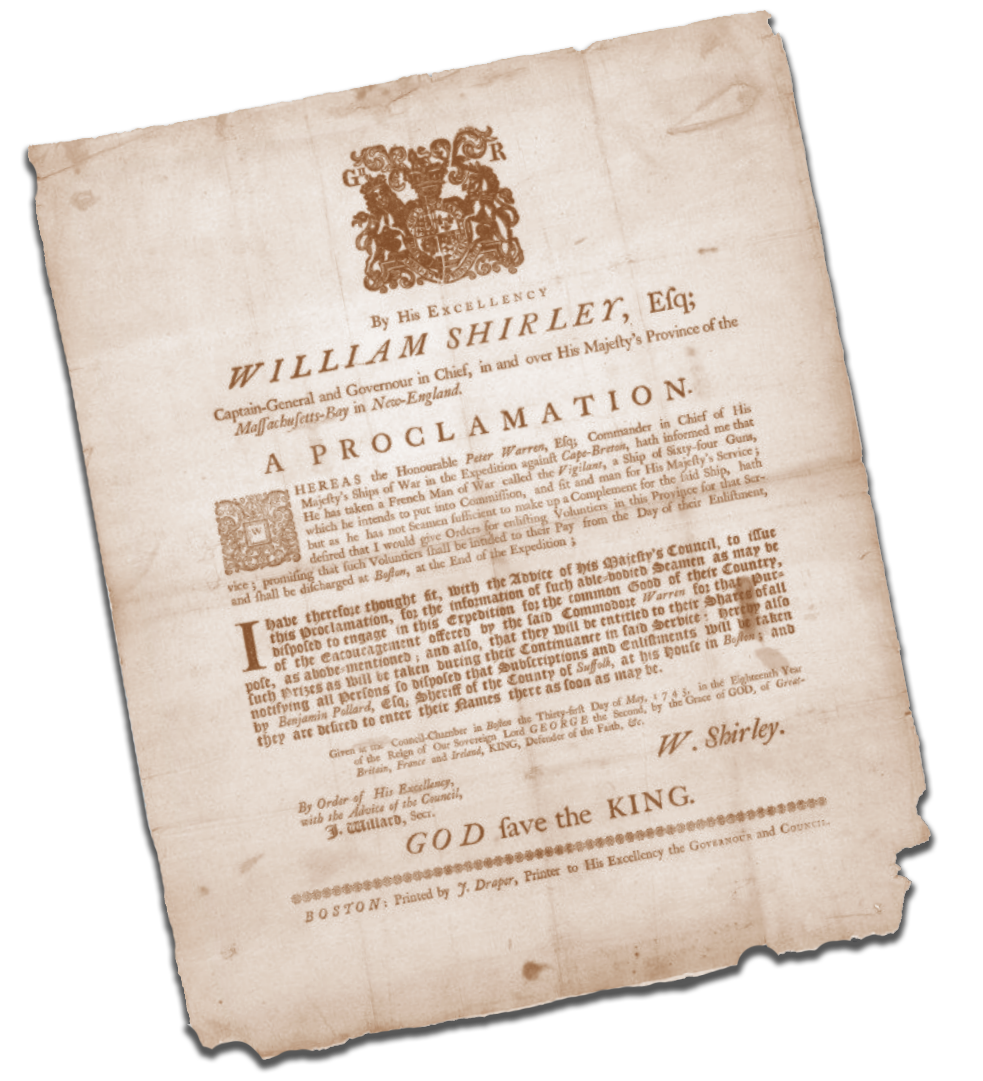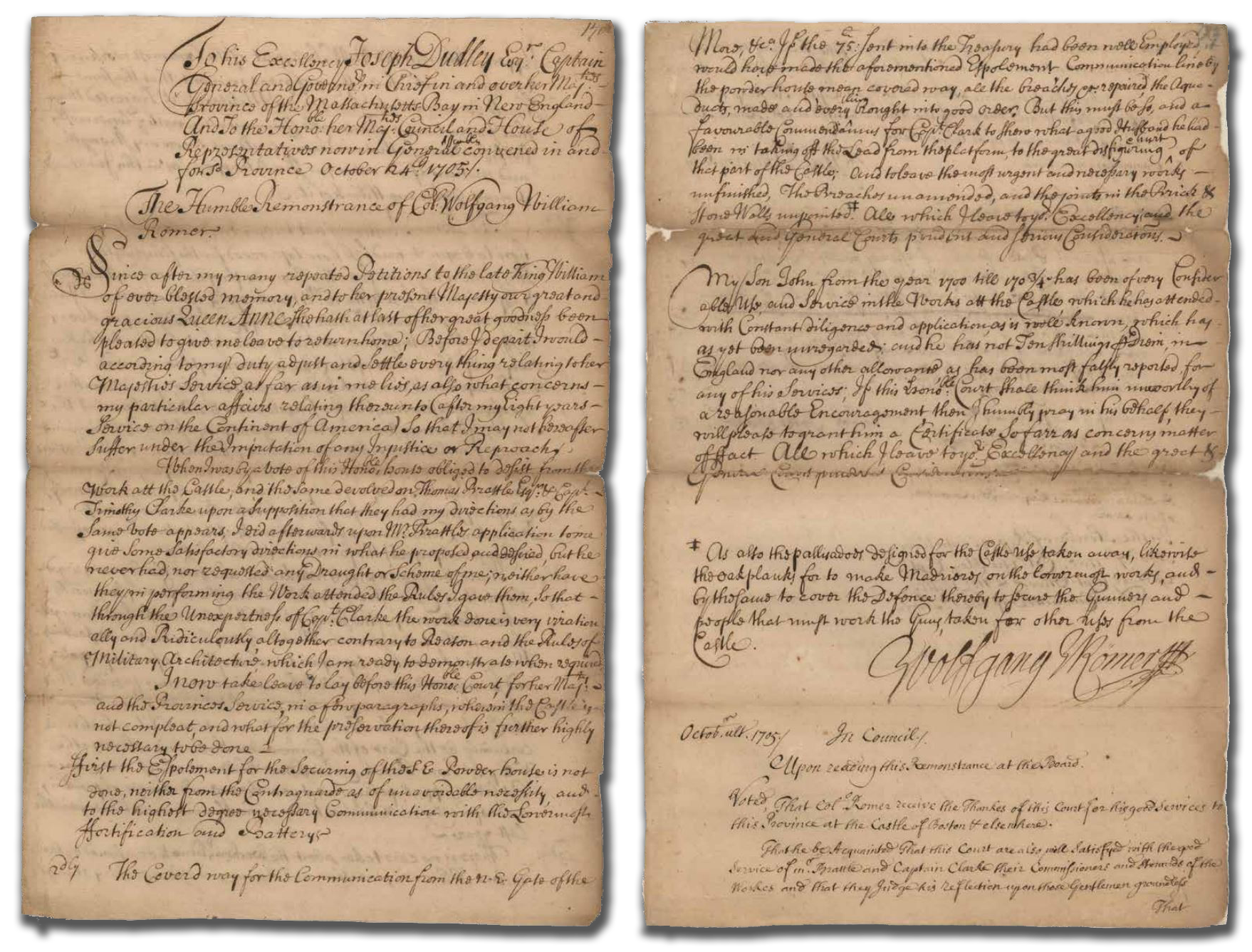During the eighteenth century Britain and France waged a series of wars for control of North America. Castle Island was a staging area for operations in Canada.
“The safety of this province in great measure depends on the strength of his majesty’s Castle William.”
– Governor William Shirley
” - National Portrait Gallery, Washington
Governor William Shirley
The fort’s southeast bastion is named for William Shirley who served for sixteen years as Governor of the Province of Massachusetts Bay because he “repaired Castle William, erected other works, made it the strongest fort while under the British government.”
-
1745 Archives Anglaise
William Shirley
Ambitious politically and financially, William Shirley advocated aggressive action against the French in Canada. During his administration colonial forces captured the great fortress of Louisburg, Nova Scotia. It was thought to be impregnable but an English fisherman, captured and released by the French, reported that the garrison was undermanned. Its siege by colonial forces in 1745 was a sensation, even in Europe. Captured guns were placed at Castle William in the event of a French counterattack.
Imperial Tensions
In November, 1747 British Commodore Knowles brought his fleet from Louisburg to Boston. To replenish his crews, press gangs descended on the town forcing men into service. “Impressment of seamen” was a contentious issue before the War of 1812. This issue also led to riots during the administration of William Shirley, including mob action at his home. Shirley retreated to Castle Island to organize suppression of the mob but also negotiated with British authorities to stop the practice.
Shirley's home in Roxbury

a proclamation
- Samuel Sewal
Render Unto Caesar
Puritan minister Samuel Sewall intervened in the dispute
between Colonel Romer and Massachusetts workers. “I told
the workers that if any intemperate language proceeded from
Colonel Romer, twas not intended to countenance that or
encourage their imitation, but observe his direction in things
wherein he is Skillful.”

After fawning references to the late King William
and present Queen Anne, Romer presents a detailed listing of flaws
in the fort’s construction under the orders of Captain Clarke, “the
work done is very irrationally and Ridiculously altogether contrary
to Reason and the Rules of Military Architecture.” In a hometown
decision the colony’s Council thanks Romer but states “That he be
Acquainted that this Court are also well satisfied with the good service
of Captain Clarke.”
- Massachusetts Archives
